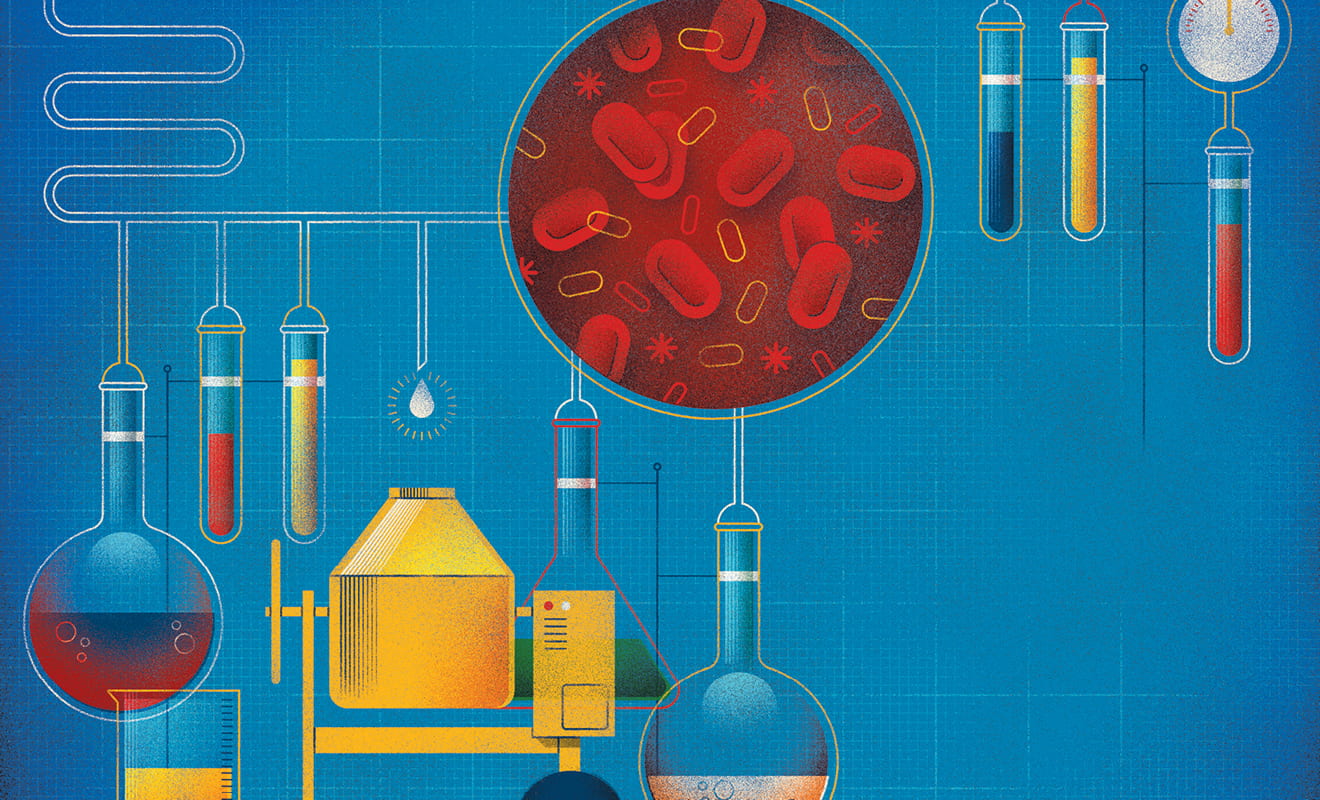Researchers Use Enzymes to Create Self-Healing Concrete
WPI researchers are using an enzyme found in red blood cells to create self-healing concrete that is four times more durable than traditional concrete, which could extend the life of concrete-based structures and eliminate the need for expensive repairs or replacements. The work, published in the peer-reviewed journal Applied Materials Today, uses an enzyme that automatically reacts with atmospheric carbon dioxide (CO2) to create calcium carbonate crystals, which mimic concrete in structure, strength, and other properties, and can fill cracks before they cause structural problems.
It sounds sci-fi, but it’s a real solution to a significant problem in the construction industry.
Nima Rahbar
“The global use of concrete is ubiquitous,” says Nima Rahbar, associate professor of civil and environmental engineering and lead author. Concrete is the most widely used man-made building material in the world and is a critical component in everything from bridges to high-rise buildings, family homes, sidewalks, and parking garages. But concrete is brittle and prone to cracking from exposure to water, thermal changes, stress, road salt, flaws in design, and other factors that can lead to a loss of structural integrity and the need for costly repairs or replacements.
“If tiny cracks could automatically be repaired when they first start, they won’t turn into bigger problems that need repair or replacement. It sounds sci-fi, but it’s a real solution to a significant problem in the construction industry,” says Rahbar.
Inspired by the process of CO2 transfer in nature, Rahbar’s research, which previously received funding from the Massachusetts Clean Energy Center, uses carbonic anhydrase (CA), an enzyme found in red blood cells that quickly transfers CO2 from the cells to the blood stream. The CA enzyme, which is added to the concrete powder before it is mixed and poured, acts as a catalyst that causes atmospheric CO2 to create calcium carbonate crystals, whose matrix is similar to that of concrete. When a small crack forms in the enzymatic concrete, the enzyme inside the concrete connects with CO2 in the air, triggering the growth of a new matrix that fills in the crack.
The process, which Rahbar has patented, can heal millimeter-scale cracks within 24 hours.
The research paper, titled “An Enzymatic Self-Healing Cementitious Material,” was co-authored by Suzanne Scarlata, professor of chemistry and biochemistry; Jessica Rosewitz, former PhD student and now an adjunct instructor of engineering; and PhD student Shuai Wang.



